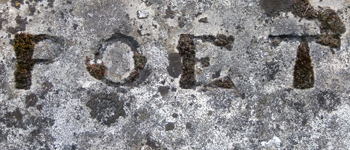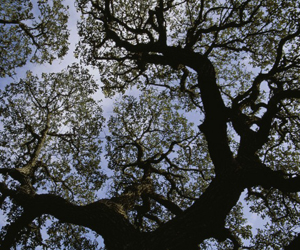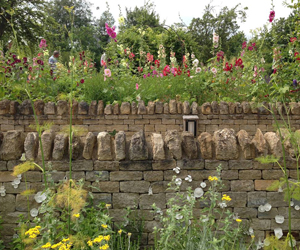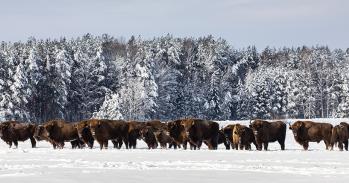
A symposium taking place on Tuesday (23 September 2014) at Cambridge University Botanic Garden will unite artists, writers, scientists and literary scholars to look at the poet John Clare’s close engagement with the natural environment as a botanist as well as poet.
A symposium taking place on Tuesday (23 September 2014) at Cambridge University Botanic Garden will unite artists, writers, scientists and literary scholars to look at the poet John Clare’s close engagement with the natural environment as a botanist as well as poet.
Clare’s mingling of Latin names with common English names, of Linnaean systems with ‘natural’ ones, is related to his self-positioning as a natural poet – a poet related to his place – combined with his desire to become an establishment writer.
Sue Edney, Bath Spa University
,In his early years, the poet John Clare worked as a gardener at Burghley House, a Tudor mansion just outside Stamford. Later, he struck up a close friendship with Joseph Henderson, an enthusiastic naturalist and head gardener at Milton Hall, an imposing house set in acres of lush parkland to the north of Peterborough. The letters sent between Clare and Henderson reveal their exchange of expertise, and also their shared interest in expanding their botanical knowledge through the pages of the numerous botanical volumes in the Milton Hall library.
In letters and manuscripts now housed in libraries in Peterborough and Northampton, Clare describes his efforts to grow in his own cottage garden some of the species he has encountered at Burghley and Milton. October 1824 finds him working ‘in the garden at making a shed for my ariculas’. Later, in one of many lists, he records the names of the auriculas he admires but is unable to afford. In November 1824 he notes that he has ‘received a parcel of Ferns & flowers from Henderson the common Polipody…the harts tongue… the Lady fern… tall white Lychnis with seven new sorts of Chrysanthemums…”.
Clare’s deep interest in plants, his love of 'botanising' and the significance of plants in his writing, is the focus of a symposium taking place next week at Cambridge University Botanic Garden. The meeting will bring together botanists, nature writers, artists and literary scholars to look afresh at the poet’s relationship with the environment. It has been organised by the Centre for John Clare Studies in the Faculty of English, set up earlier this year by Dr Paul Chirico (Senior Tutor at Fitzwilliam College), Dr Mina Gorji and Dr Sarah Houghton-Walker, to mark the 150th anniversary of Clare’s death.
It was at Northampton General Lunatic Asylum that Clare died, aged 70, on 20 May 1864. His gravestone in Helpston churchyard remembers him as ‘The Northamptonshire Peasant Poet’ and each summer children from the primary school that bears his name lay flowers on his resting place, in the form of Midsummer Cushions - a tradition dating back to Clare’s day of making cushions of turf studded with meadow flowers.
The term ‘Peasant Poet’, with its implications of lack of education, is a label that belies Clare’s intellect as someone hungry for knowledge and quick to learn. As the son of a poor farm labourer, his formal education was at best sporadic and confined to village ‘vestry’ and ‘dame’s schools’; he left school early to take a job to help support his family.
Clare read widely and engaged as much as he was able with contemporary debates on everything from politics to art theory, from religion to natural history. He tutored himself in mathematics and read a wide range of poetry, prose and drama. Many of his books are now housed in their original wooden bookcase in Northampton Public Library.
Houghton-Walker said: “We hope that next week’s symposium will encourage a conversation about Clare’s intense curiosity regarding the plants he observed in field and garden, and his desire to understand and catalogue them according to the latest scientific methods. He made close observations of plant habitats, recording how different species related to one other, and he collected many botanical specimens. His poems bear witness to his minute observations of flora.”
It is evident, however, that Clare struggled with the Linnaean system and its reliance on hard-to-pronounce Latin nomenclature. In his journal for October 1824, he records a plan to collect a book and ‘call it 'A Garden of Wild Flowers', as it shall contain nothing else with quotations from poets & others an English Botany on this plan would be very interesting & serve to make Botany popular while the hard nicknaming system of unutterable words now in vogue only overloads it in mystery till it makes it darkness visible’.
Clare enjoyed brief spells of acclaim during his lifetime and gained the support of a number of benefactors. But for many years his poetry lapsed into obscurity. It was only in the early 20th century that writers and editors such as Arthur Symons and Edward Thomas brought his work once again to public attention. Since then, he has been championed by poets such as Ted Hughes, John Ashbery, Elaine Feinstein, Seamus Heaney and Tom Paulin. Today Clare’s close engagement with the natural world chimes with a resurgence of interest in nature writing.
The poet's celebration of flora and fauna is often discussed in terms of his love of wilderness and his resistance to the enclosure movement and resulting changes in farming practices that were threatening to destroy the countryside he knew ‘with its besom ling and teasel burrs’. Eager to record and preserve, in writing, the environment he felt was under threat, he set himself the task of documenting the natural world around his village in Northamptonshire. In 1824 he began to write down his observations in a group of letters which have come to be known as an unfinished Natural History of Helpston. Despite the increasing popularity of Clare’s poetry, these were not published until 1983.
The guest speakers invited to address the symposium reflect its aim to mesh together poetry and botany. They include Professor John Parker, former director of the Botanic Garden, as well as its current director, Professor Beverley Glover, who will lead a tour of the Garden’s systematic beds.
Professor Fiona Stafford from Oxford University, an expert on literature and landscape, will talk about ‘Clare and the Splendid Sycamore’. Stafford has delivered two series on 'The Meaning of Trees' for Radio 3. She said: “Clare's wonderful sonnet on 'The Sycamore' is based on first hand observation of a tree that has often been overlooked, and even condemned, for being common and invasive. Clare's great gift is to see glory in the commonplace - and, in doing so, open the eyes of readers to things so familiar as to be virtually invisible.”
As well as demonstrating his understanding of the interconnectedness of the environment, Clare’s poems reveal that his interest in botanical classification registered and responded to his own feelings about social class. He was born into poverty, one of a pair of twins, the only one to survive, and his tiny frame may have been a result of malnutrition. Like his father, he began work as a farm labourer while still a boy. Beset by terrible depression, he struggled to make ends meet all his life and, as a working class poet, formed relationships with people from different social strata but never felt entirely accepted by them.
Dr Sue Edney from Bath Spa University will look at the ways in which botanical classification is in itself class-based and how plants in their ‘place’ become caught up in this process of identification and division through naming. She said: “Clare’s mingling of Latin names with common English names, of Linnaean systems with ‘natural’ ones, is related to his self-positioning as a natural poet – a poet related to his place – combined with his desire to become an establishment writer.”
The writer Richard Mabey made his name in the early 1970s with his seminal book Food for Free and has since written extensively on people, plants and the things that bind them together. His 2007 book Nature Cure charts his experience of breakdown and recovery – and the role of nature as healer. As a Visiting Fellow at Emmanuel College, where he is working on a book due out next year, he will talk about ‘Clare and the plant’s point of view’, exploring Clare’s distinctive ability to put himself in the position of his poetic subjects – in this case, the plants he loved and wrote about.
Hetty Saunders is just embarking on an MPhil at Wolfson College, Cambridge, where she will be writing a dissertation on Clare and botany. In looking at the complex relationship that Clare created between plants, landscapes and texts, she will discuss the way that Clare often related his writing to plants of the field, and vice versa, as in this quote from his poem ‘Remembrances’: ‘… my poesys all cropt in a sunny hour/As keepsakes and pledges all to never fade away’.
Among the participants at the symposium will be two artists, Anita Bruce and Kathryn Parsons, members of the five-strong UnEarthed collective who have been resident artists this year at Clare Cottage, Helpston. Kathryn Parson’s ‘I Found the Poems in the Fields’ renders Clare’s intimate observations of nature in delicate hand-modelled porcelain. Her creations tell of the layered platelets of lichen colonies from Royce Wood and Lolham Bridges, and the bold architectural plants found at Swaddywell, all sites known and written about by Clare.
John Clare's Cottage was renovated and established as an educational centre in 2009 by the John Clare Trust, of which Paul Chirico is vice-chair. The cottage has a garden designed by Adam Frost which won a gold medal at the Chelsea Flower Show in 2012. The landscapes around the village, though much affected by agricultural and social changes since Clare’s birth in 1793, still include many of the features that he loved to visit and described so precisely.
The symposium ‘John Clare and Botany’ will take place at the University of Cambridge Botanic Garden on 23 September. The event is fully booked.
Inset images: John Clare as a young man (Creative Commons); inscription from Clare's grave in Helpston (Geoff Shipp); sycamore tree (Creative Commons); John Clare's cottage garden with porcelain installations by Kathryn Parsons (UnEarthed)
The text in this work is licensed under a Creative Commons Licence. If you use this content on your site please link back to this page. For image rights, please see the credits associated with each individual image.





